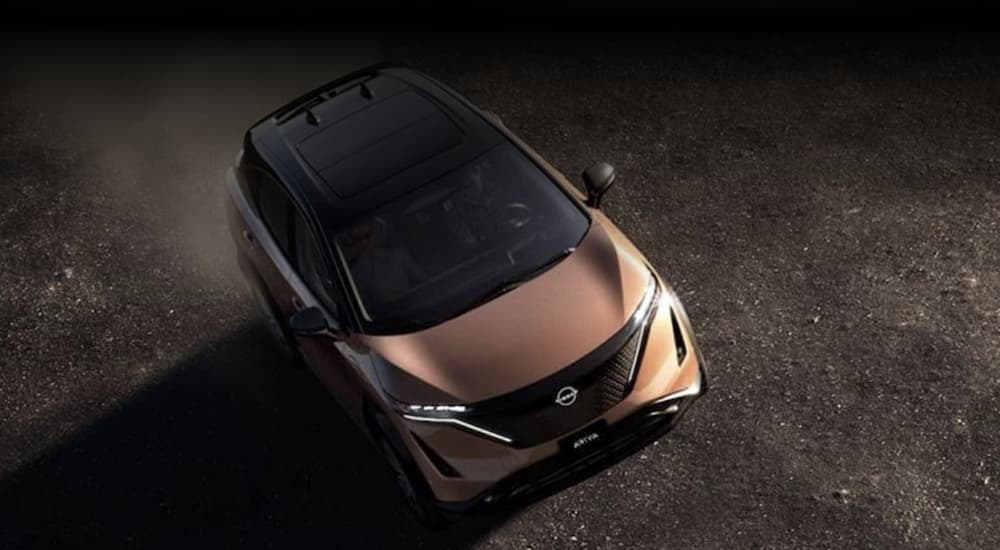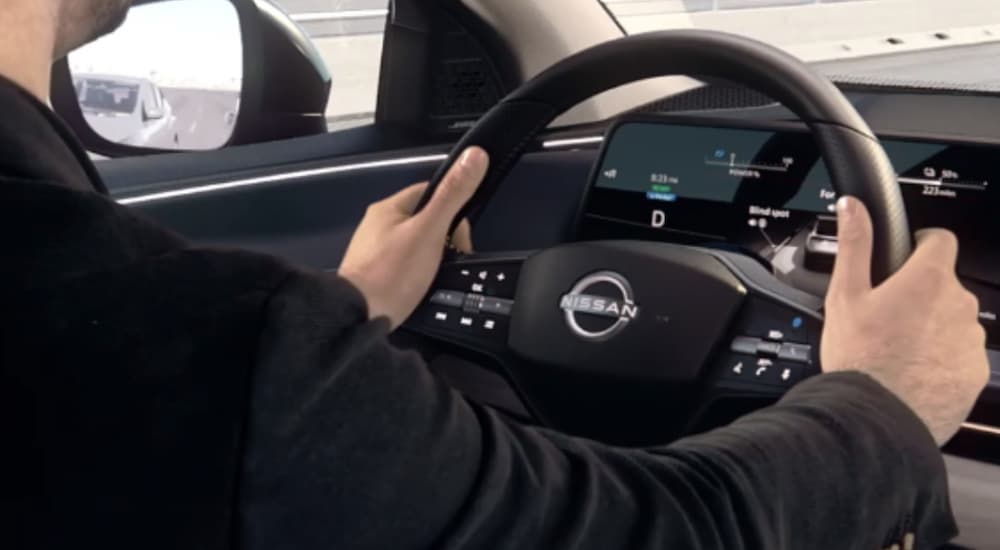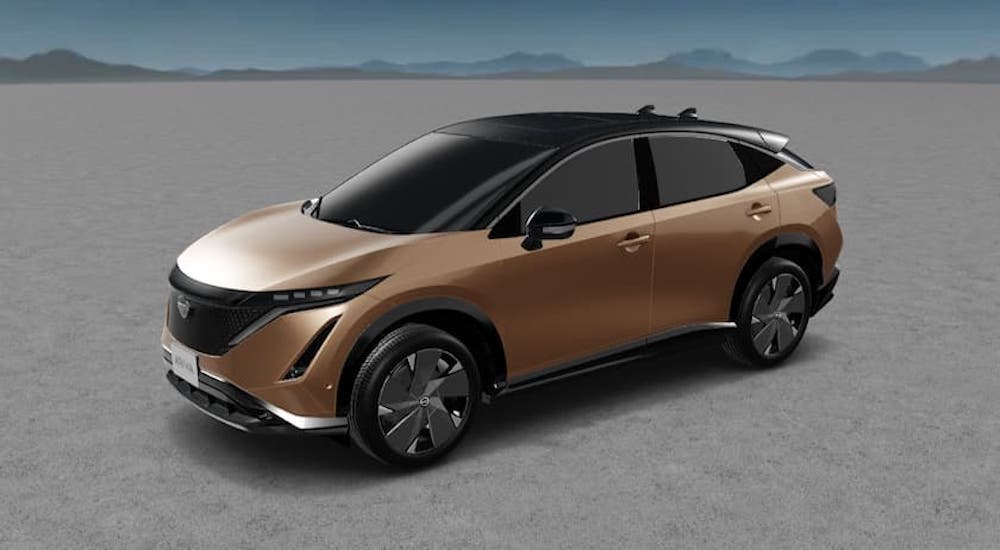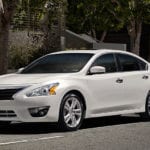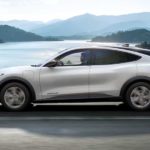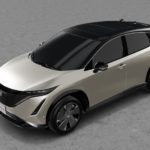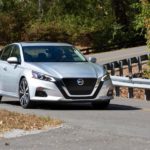Have you heard about the 2023 Nissan ARIYA? The new, sleek, battery-powered SUV from Nissan. This isn’t the first electric vehicle (EV) from Nissan. The LEAF made its debut to the public in 2010. The 2022 model LEAF gets up to 149 miles per charge on the standard 40 kWh. While that’s impressive, the standard 87 kWh battery in the ARIYA seeks to deliver up to 238 miles before you need to pull over and power up. While all this is great news for the planet and for buyers who want a greener way of getting to and fro, this isn’t the first and certainly not the last time Nissan will prove to be a forward-facing company. Constantly reinventing the wheel over and over in the last 80 years, the automaker has yielded some unique, market-changing vehicles to the automotive world.
By Another Name
Datsun is a nostalgic name familiar to many. It’s easy to forget that Nissan was known as Datsun in the United States up until the mid-1980s, when it officially switched over to Nissan. Beginning decades before Nissan ever debuted in the US, it was making waves in Japan, becoming the nation’s first automaker in 1937 with the creation of the Datsun type-15. Models in this line included a pickup truck, a van, and a selection of four other car models ranging from a conservative sedan to a sleek coupe.
Managing to overcome the after-effects of the war, the automaker showed it didn’t intend to slow down; if anything, it was speeding forward. With the release of innovative new models like the Skyline and the Cedric, demand grew for the brand both in Japan and overseas. This surge in popularity caused Nissan to become the first Japanese car company to win the Deming Prize for engineering excellence, beating out other popular brands at the time like Toyota.
Fire!
Known today for its multi-use cargo and utility vans that give business owners and tradespeople the ease of loading, unloading, and hauling, back in the day, Nissan was producing a different kind of utility vehicle. A far cry from the subtle white or black vans, the blazing red 1950s Datsun fire engine is a sight to see. Not to mention one that would be impossible to miss if ever you should come across it. The original design sprang from a Datsun pickup truck, known to be a rugged and dependable vehicle at the time. It also helped that the vehicle was built to be narrow and compact, making it easy to navigate narrow alleys and streets of cities, allowing it to reach emergencies faster than its bulkier counterparts.
The fire truck would later be redesigned in the 1960s to be the Nissan Patrol 60 Fire Engine. Larger than its predecessor, the Patrol 60 would have a longer run, being available up through the 1980s where it would merge with the Safari. The second generation of fire vehicles resembled a truck, jeep blend with a longer back and stockier front. It had a convertible option and came equipped with a ladder frame and a one-piece windshield, as well as a V6 engine and leaf suspension, making this a dependable and tough utilitarian vehicle.
Sporty
In the 1960s, times were changing fast, and Nissan had no trouble keeping up. After acquiring the smaller Japanese company Prince Motors, they refitted the Datsun with a new racing engine, creating the sleek and speedy Datsun 240Z. The car changed the way the public viewed sports cars by selling the idea that a car was more than a car. It was an extension of its owner; it was a “driving experience.” It wasn’t until 1969 that the car was finally made available to American markets.
The 240z helped reshape America’s image of the practical little Japanese automaker into something exotic and fresh. The little roadster came with a V6 engine and 151 hp of horsepower. While the sports car was marketed as simply the 240z in countries like the United States and Australia, it carried the refined name Fairlady in its home country of Japan, where it was sold by beautiful young sales associates called Miss Fairladies.
Nissan would go on to produce a number of high-powered sports cars made for both on and off-road use. The sleek speedsters include models such as the 1990s R390 and Saurus Jr. and the mid-2000s oddly shaped DeltaWing that came to a sharp point like a bird’s beak and never failed to capture racegoers attention.
A Strange Mix
While Nissan’s jaunt into the world of sports cars and motor racing brought the car company success in foreign markets, not all of its models have been so well received. Before the Nissan Rogue, Kicks, or Juke, there was their offbeat, almost forgotten cousin, the Judo, a 1980s two-seater four-wheel drive with a V6 engine. The vehicle was an odd combination of car and truck. People couldn’t quite decide what to make of the strange little unit. This was a compact SUV before compact SUVs like the Chevy Tracker, Toyota RAV4, or Honda CR-V were available. People just couldn’t put their finger on it. With features like a fold-down rear wheel on the bumper, uncluttered, minimalist interior, and a hard convertible top that simply pushed back so that it rested on the car’s back end, parallel with the bumper, it couldn’t be decided if the car was completely ingenious or a complete mess. As with many innovators, Nissan was a bit ahead of its time with the Judo, with it never going into full-scale production.
Modern Hatchbacks
A section of the automotive industry usually seen as a little conservative, a little square, or at the best of times a little quirky, hatchbacks are known for being great understated rides. They’re small but still have the headroom and space for hauling. Leave it to Nissan to take it to the next level with the introduction of the 2015 concept of the Sway. A modern, sleek play on the traditional hatchback. Way ahead of the curve with this one, the Sway was put on display at the 2015 Geneva Motor Show. Its smooth, contouring raindrop silhouette, striking elongated lights, and large windows on the sides and the roof give it a laid-back, but exciting feel we can only hope will lead to a market version in the near future.
Going Green
In a competitive, ever-changing global market, Nissan proves to be an innovative leader in car design and function. Never one to sit around and rest on past successes, the automaker is always pushing itself to grow, branch out, and go further. So when the company announced the creation of the LEAF, people sat up and took notice, aware this could change everything.
In 2010 the Nissan LEAF was the world’s first zero-emissions, fully electric car to be made available to the public. The hatchback remains one of the most affordable electric cars in a rapidly expanding market that now includes the likes of Tesla, Ford, and Volkswagen, among others. This clever machine remains a favorite in the market, sweeping up multiple awards since its release, including the 2011 World Car of the Year and being awarded the best electric car in its class by Kelley Blue Book. Now with the addition of the electric 2023 ARIYA, Nissan continues to make it easier and more affordable than ever to go green without sacrificing luxury or the planet.
Always Ahead of the Curve
How Nissan continues to pack utility and design into such striking and minimalist packaging is a feat in itself. It’s something that continues to make the car company so exciting even more than 80 years after its first set of wheels rolled off assembly lines and onto car lots across the globe. It’s this dedication to innovation that has made us so excited to see what the 2023 Nissan ARIYA can do.
